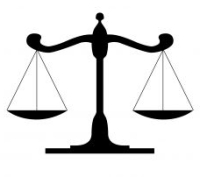 This is the second in a series of posts addressing some of the most commonly asked questions regarding American Indians, Indian Tribes, and the law. The first post addressed casinos, hunting and fishing rights, and taxes. This second post, unlike the first, is devoted to just one question, namely, why doesn’t the unique legal treatment of Indian tribes or their members violate the Constitution’s guarantee of equal protection?
This is the second in a series of posts addressing some of the most commonly asked questions regarding American Indians, Indian Tribes, and the law. The first post addressed casinos, hunting and fishing rights, and taxes. This second post, unlike the first, is devoted to just one question, namely, why doesn’t the unique legal treatment of Indian tribes or their members violate the Constitution’s guarantee of equal protection?
The U.S. Constitution’s 14th Amendment provides, among other things, that “[n]o state shall . . . deny to any person within its jurisdiction the equal protection of the laws.” The Constitution’s text actually provides no comparable limitation on the federal government, but the U.S. Supreme Court in 1954 held that the 5th Amendment’s Due Process Clause, which does apply to federal law, encompasses a nearly identical guarantee of equal protection.
But this equal protection guarantee gets used with rigor by judges, in their review of challenged laws, only when the government is discriminating on certain grounds (e.g., race or ethnicity), when the law impinges on certain fundamental rights, or, every so often, when a court believes that the government has acted so arbitrarily or perniciously that the government’s action cannot fairly be sustained.
It is the initial set of these circumstances—discrimination on the basis of race, ethnicity, or ancestry—that may seem, at least at first blush, to be rather problematic when it comes the government’s relationship to Indian tribes and their members. After all, tribal membership—which is a prerogative of the tribes, but is in some manner sanctioned by the federal government—almost always requires proof of tribal ancestry, often described in terms of a blood quantum such as one-quarter (a grandparent) or one-eighth (a great-grandparent).
Thus, when the government treats Indians differently from non-Indians, it is effectively, even if indirectly, treating persons differently on the basis of race or ethnicity or ancestry. In turn, one would think that the equal protection guarantee would be operating in full gear every time a law or regulation is enacted or enforced that relies on the distinction of being an Indian tribe or tribal member. To pose the issue more dramatically, why isn’t Title 25 of the U.S. Code, which after all is labeled “Indians,” one large conglomeration of presumptive equal protection violations?
The U.S. Supreme Court unanimously issued its formal answer to this question in 1974 in a case titled Morton v. Mancari, which involved a challenge by non-Indian employees of the Interior Department’s Bureau of Indian Affairs to the Bureau’s promotion preference for Indians. The Court rather matter-of-factly declared that “this preference does not constitute ‘racial discrimination’” and “is not even a ‘racial’ preference.” In a critical footnote, the Court explained that “[t]he preference is not directed towards a ‘racial’ group consisting of ‘Indians’; instead, it applies only to members of ‘federally recognized’ tribes. This operates to exclude many individuals who are racially to be classified as ‘Indians.’ In this sense, the preference is political rather than racial in nature.”
In other words, the fact that the tribes are sovereign entities means that relationships, including employment relationships, between the federal government and one or more tribes or its members (who are citizens of these separate sovereigns) can and ought to be viewed as fundamentally political in nature, at least from a constitutional perspective. What the Court sidesteps, of course, is the above-noted reality that the citizenry of these separate sovereigns is overwhelmingly a function of ancestry or race or ethnicity and, as is not the case with foreign sovereigns, the federal government has regularly approved, directly or indirectly, this type of tribal citizenship criterion.
Intellectually, the Mancari opinion can leave one quite disappointed if not perplexed, especially if one focuses narrowly on the Court’s analysis within the confines of equal protection doctrine. There is, of course, more to the complicated history of federal-Indian relations, and thus to the Mancari decision, than any clause-specific analysis can attempt to capture, and the striking inadequacy or superficiality of Mancari’s reasoning can no doubt be partly explained on that basis.
Nevertheless, the reality is that there remains a degree of tension—culturally and constitutionally—inherent in the special relationship between the federal government and the Indian tribes and tribal members within the nation’s borders. Perhaps there will come a time when the Court can speak with greater precision or candor, or within a different doctrinal landscape, and this tension can be diminished as a result. That said, the Court has ventured close to the meaning of Mancari only once in recent decades, in a 2000 case involving Hawaii, and has otherwise shown little interest in either revisiting or clarifying its original reasoning. Thus we are left with Mancari, with the tension that it leaves unresolved and the questions that it leaves unanswered.
For further reading, I recommend Bethany R. Berger, Reconciling Equal Protection and Federal Indian Law, 98 California Law Review 1165 (2010).
